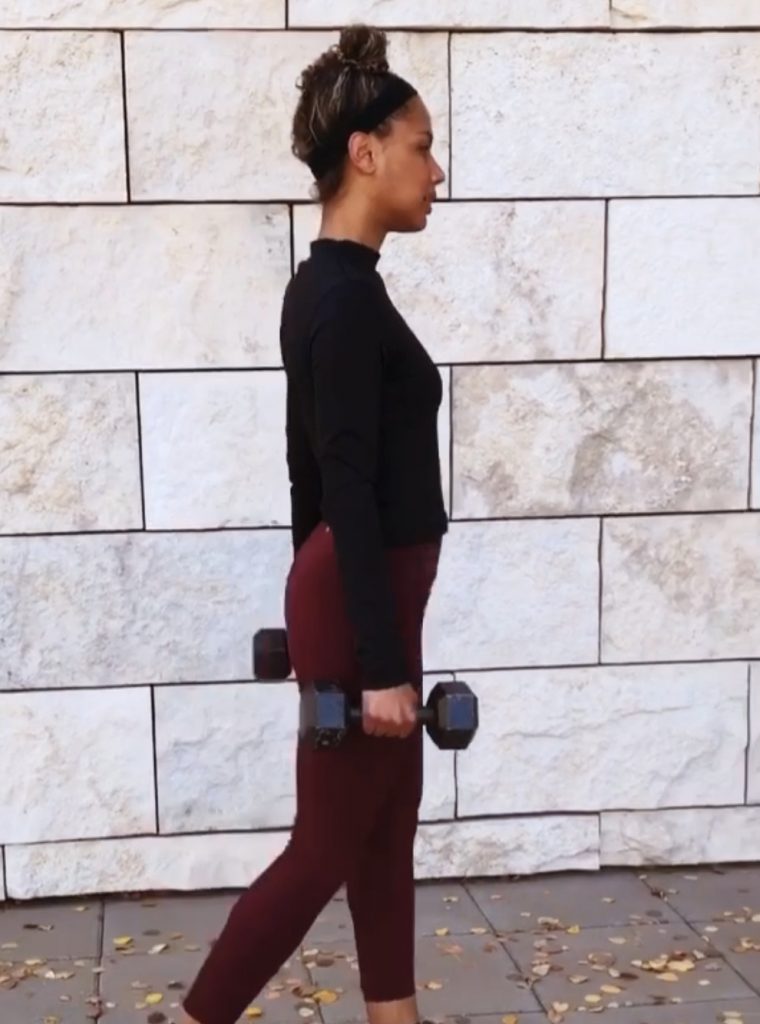
Core stability is imperative for all facets of movement and performance, whether you’re a skier or skater.
As a new ski season kicks off, core strength can be a great asset to ski at a higher intensity, for a longer duration and with less fatigue. When you hit the terrain, you’ll want to have good core stability to not only turn well, but also handle different and varied snow conditions with ease. It’s not too late to add a great whole-body exercise called Farmer’s Walk—a walk with a weight—to your training program.
Walking or any lower body movement where you carry or “load†yourself with a weight for a predetermined distance or time challenges the entire kinetic chain of the body and targets the deep stabilizing muscles of the core.
What is core stability?
The definition of core stability is your ability to maintain your posture and balance while moving your extremities. Sound a lot like skiing?
The core musculature has a unique function. Throughout the day, if you’re active, the core muscles act to stiffen the torso and function primarily to prevent motion. A strong core allows the strength to radiate out peripherally to the rest of the body.
Core stability is imperative for all facets of movement and performance, whether you’re a skier or skater. The Farmer’s Walk is a great whole-body exercise. The exercise targets the abdominals, and provides peak activation of all the muscles that support the spine, the gluteus maximus, gluteus minimus and cervical spine muscles during the walk. You’ll hit all the core muscles of the trunk and pelvic stability muscles, as well as the hips.
Together, these numerous and multi-jointed muscles are known as the lumbo-pelvic hip complex.
You can think of Farmer’s Walk as a vertical plank, a move that challenges the lumbo-pelvic hip complex. There are several variations of loaded carries, and here are two variations that will strengthen your core as well as challenge the body’s stabilizing system.

Unilateral Farmer’s Walk
Unilateral training exposes any asymmetries in the body. Noticeably, walking with a single weight provides a greater spine load than if the load were split between two hands. (For beginners, you might want to experiment with carrying a weight in each hand.) Carrying one weight targets the lateral spine muscles, called quadratus lumborum, and the lateral abdominal wall, which have an important role in that they stiffen the pelvis to prevent it from bending to the side of the leg swing. The unilateral Farmer’s Walk also enhances the rotational demand to the core as the body now has to control the added stress in order to maintain dynamic balance.
Choose weights that are challenging yet appropriate for your fitness level.
• Squat down and grasp a weight in one hand. Maintain a braced core, and return to a stand-tall position.
• Take slow and controlled steps forward for 30 seconds. Alternate sides.

Unilateral Waiter’s Walk
An added benefit to this move is that it helps strengthen the muscles around the shoulder, referred to as glenohumeral stability, a term used to describe how the arm bone sits well into the shoulder and upper back muscles. Here’s how it’s done.
• Grab a weight in one hand and return to a stand-tall position.
• Extend arm up overhead.
• Keep a tight grip on the weight and take slow controlled steps forward for 30 seconds. Alternate sides.

